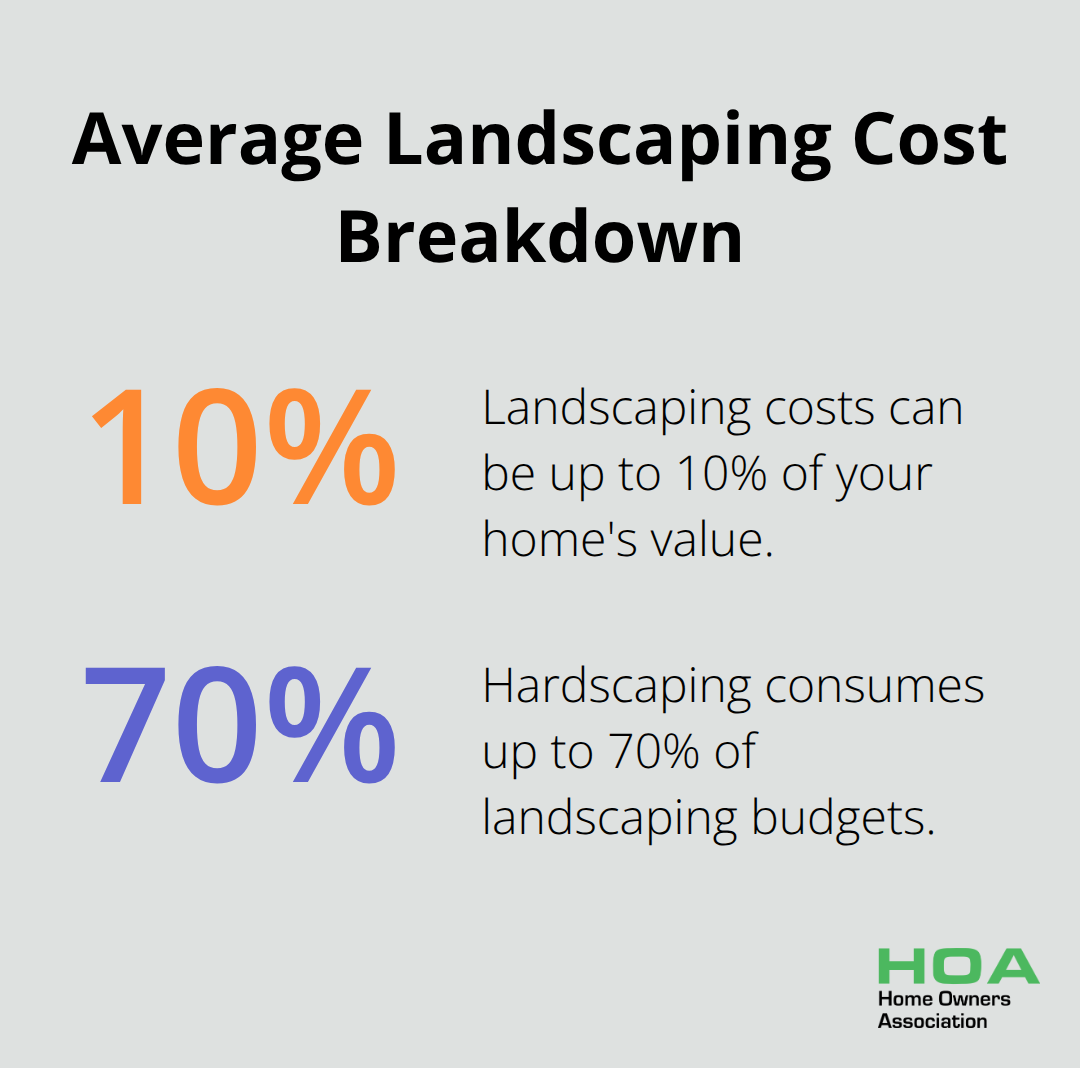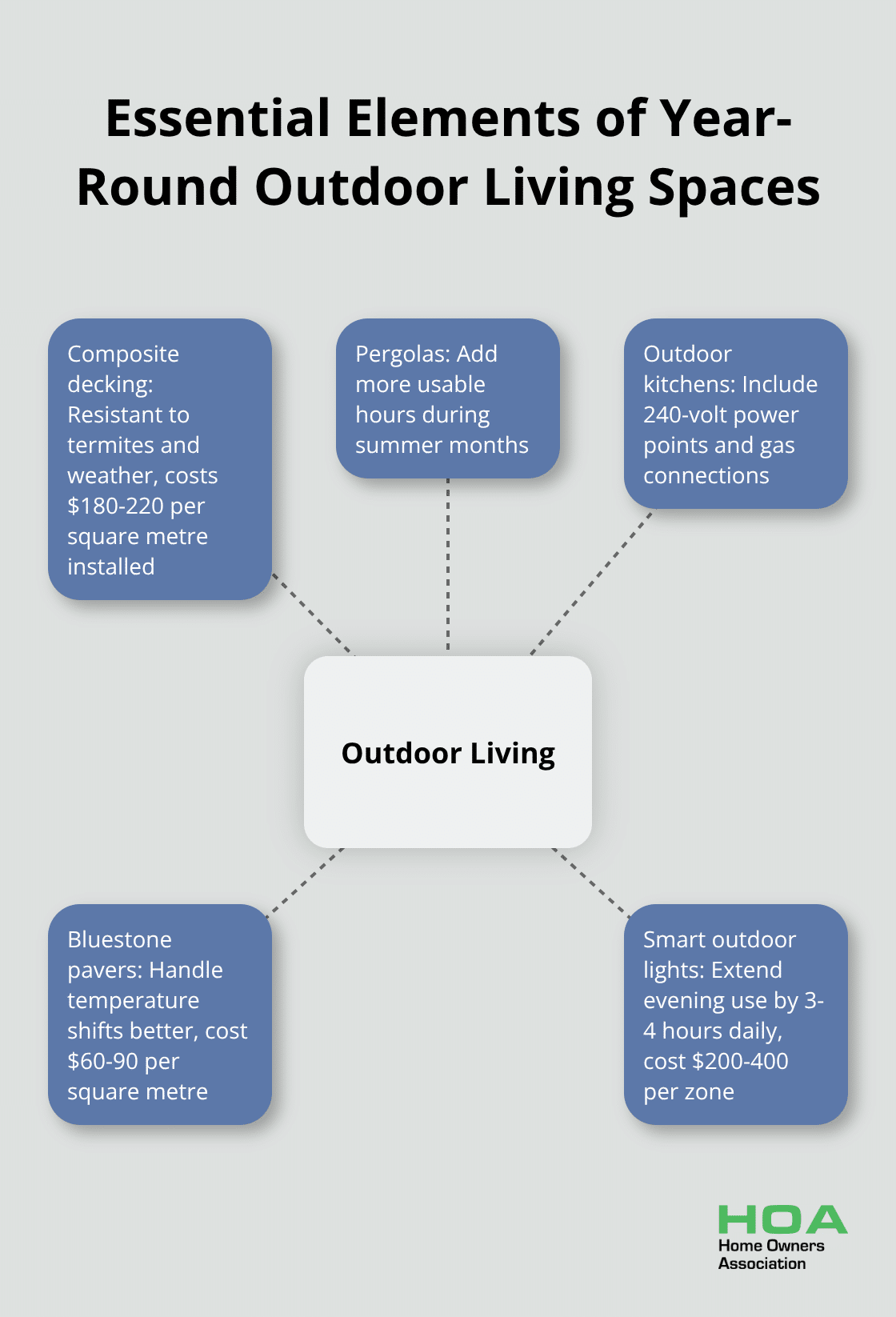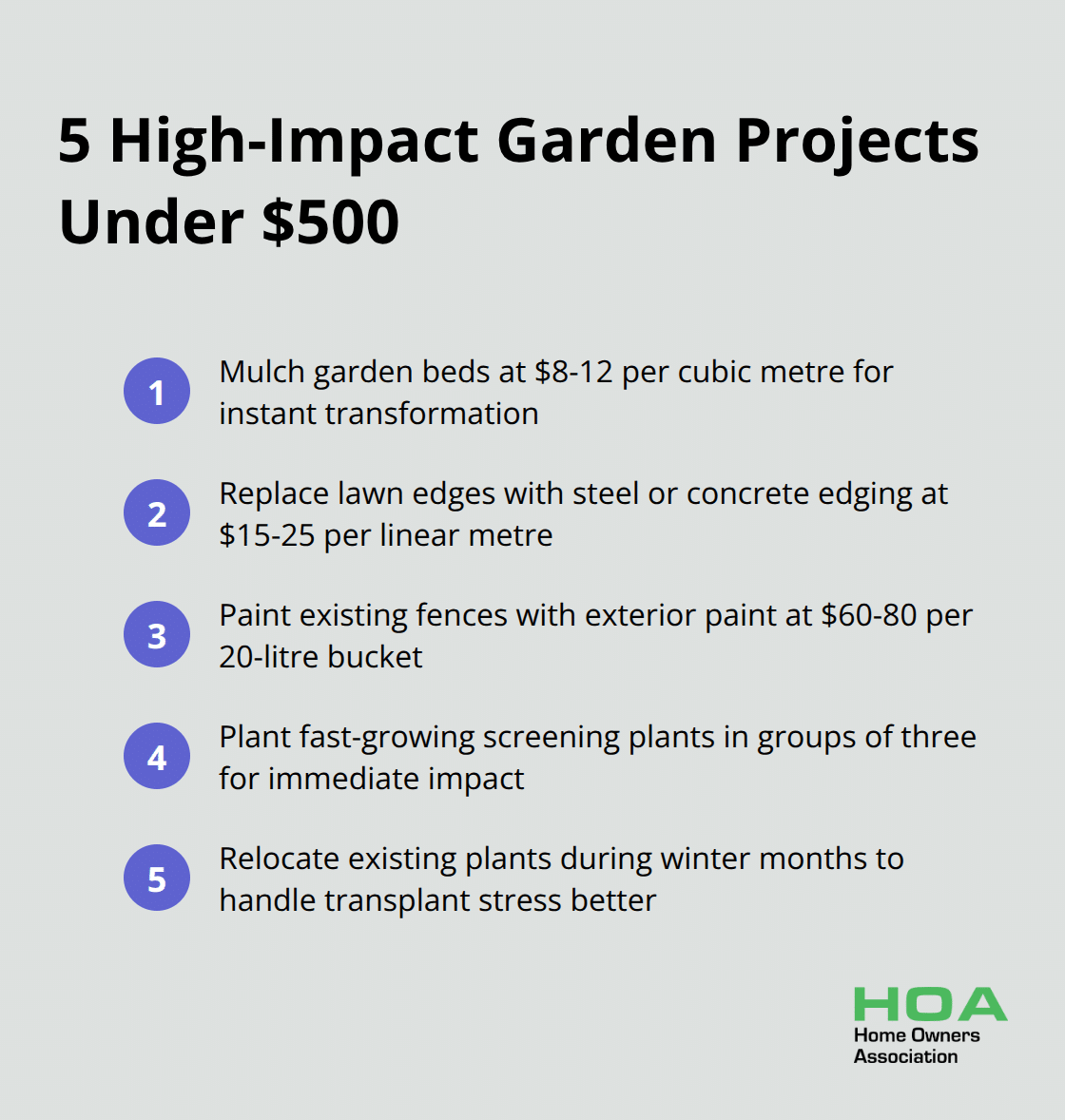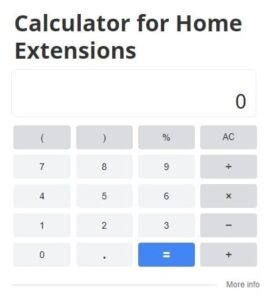
Your outdoor space holds untapped potential that smart planning can transform into a stunning retreat. We at Home Owners Association see homeowners achieve remarkable results with the right garden renovation ideas.
Australian properties benefit from strategic upgrades that work with local climate conditions. Professional planning combined with budget-conscious choices creates lasting value for your property.
What Should You Know Before Starting Your Garden Renovation
Evaluate Your Space Like a Professional
Walk your property at different times of day to understand sun patterns, drainage issues, and microclimates. The Royal Horticultural Society notes that pH testing measures soil acidity or alkalinity, with pH 7.0 considered neutral and values below 7.0 indicating acid soil. Most Australian soils require amendment – clay soils need organic matter for drainage, while sandy soils need compost for water retention.
Document problem areas like waterlogged spots after rain or sections that remain dry despite watering. Take photos from multiple angles and note existing plants worth preservation. This assessment determines whether you need professional soil remediation or can proceed with standard amendments.
Budget Realistically for Australian Conditions
As a general rule, average landscaping costs are between 5 and 10 per cent of the value of your home, with hardscaping consuming 60-70% of budgets. Include a 15% buffer for unexpected expenses – underground utilities, rock removal, or drainage solutions frequently surprise homeowners.

Materials like pavers cost $30-80 per square metre, while established trees range from $200-800 each. Labour represents 40-50% of total costs, with qualified landscapers charging $50-80 per hour. Australian conditions demand quality materials (cheap pavers crack under temperature fluctuations, and inferior irrigation systems fail during drought periods).
Time Your Project for Success
Plant between March-May or August-October when temperatures moderate and rainfall patterns support establishment. Summer renovations cost 30% more due to intensive irrigation needs and plant stress. Winter work suits hardscaping but limits plant selection and growth.
Northern Australia favours dry season work from May-September, while southern regions benefit from autumn and early spring timing. Book contractors 8-12 weeks ahead for peak seasons (staged renovations spread costs and allow learning from early phases before completing larger areas).
Spring planting reduces establishment costs compared to summer installations that require intensive watering. With your foundation knowledge established, you can now explore the most popular renovation ideas that transform ordinary Australian gardens into extraordinary outdoor retreats.
Which Renovation Ideas Transform Australian Gardens Best
Outdoor Living Spaces That Work Year-Round
Composite decking beats timber in Australian conditions and resists termites while it weathers without annual maintenance. Trex and similar brands cost $180-220 per square metre installed but eliminate the $50 annual stain costs of timber. Position decks on the eastern side of homes to capture morning sun while you avoid harsh afternoon heat.
Homeowners prioritise outdoor entertainment spaces, with pergolas that add more usable hours during summer months. Bluestone pavers handle temperature shifts better than concrete alternatives, though they cost $60-90 per square metre compared to $40-60 for concrete.
Install outdoor kitchens with 240-volt power points and gas connections – retrofit costs triple compared to initial installation. Smart outdoor lights with weather sensors and smartphone controls cost $200-400 per zone but extend evening use by 3-4 hours daily.

Water Features That Reduce Maintenance
Solar fountains eliminate electrical installation costs while they provide movement that prevents mosquito breeding. Position water features where they catch afternoon shade – full sun locations require 30% more water due to evaporation. The Australian Rainwater Harvesting Association confirms properly sized systems can meet 100% of garden water needs.
Install water features with recirculation pumps rather than constant-flow systems to reduce water waste by 80%. Stone or ceramic bowls work better than metal options that heat up and stress aquatic plants in Australian summers.
Native Gardens That Cut Water Bills
Native plant gardens with bottlebrush, grevillea, and kangaroo paw reduce water usage by 60% compared to exotic species. Plant spacing matters – crowded natives develop fungal issues, while proper spacing (1.5-2 metres for large shrubs) promotes airflow and healthy growth.
Mulch with local materials like tea tree bark or eucalyptus chips rather than imported products that cost twice as much and may introduce pests. Native gardens establish faster when you plant them during autumn months and water them deeply twice weekly rather than daily shallow watering.
These popular renovation ideas create the foundation for your garden transformation, but smart homeowners know that budget-conscious approaches can achieve similar results without premium price tags.
How Can You Transform Your Garden Without Breaking the Bank
Target High-Impact Projects That Cost Under $500
Focus renovation efforts on areas visible from your home’s main windows and entrance points. Mulch garden beds at $8-12 per cubic metre and transform appearance instantly while helping to reduce surface runoff and increase soil moisture. Replace tired lawn edges with steel or concrete edging at $15-25 per linear metre – this single change makes gardens appear professionally maintained. Paint existing fences with exterior paint at $60-80 per 20-litre bucket to refresh boundaries without replacement costs of $200-300 per linear metre.
Plant fast-growing screening plants like bamboo or pittosporum in groups of three rather than single specimens – mass plantings create immediate impact for 60% less cost than individual feature plants. Relocate existing plants during winter months when they handle transplant stress better, and divide established perennials to multiply your plant collection at zero additional cost.

Access Trade Pricing Through Strategic Sourcing
Landscape supply yards offer trade pricing to homeowners who purchase full pallets – pavers drop from $80 to $45 per square metre when you buy complete pallets of 15 square metres. Pool shops sell bulk quantities of hydrochloric acid for $12 per litre compared to $35 at hardware stores (perfect for cleaning concrete and stone surfaces before renovation work begins).
Nursery clearance sections during February and August offer established plants at 70% discounts as businesses clear seasonal stock. Facebook Marketplace and Gumtree provide secondhand materials like retaining wall blocks, established trees, and water features at 30-50% of retail prices from homeowners who complete their own renovations.
Maximise Existing Elements Before You Add New Features
Pressure wash concrete surfaces and reseal with penetrating sealers at $40 per 4-litre container to revitalise driveways and paths without replacement. Existing garden beds expand easily when you remove lawn edges and incorporate adjacent grass areas – soil amendment costs $25 per cubic metre compared to $8,000 for new retaining walls and fill. Relocate healthy established plants to create new garden arrangements rather than purchase additional specimens at $50-200 each.
Transform existing pergolas and structures with climbing plants like star jasmine or grape vines instead of building new shade structures that cost $3,000-8,000. Strategic pruning of overgrown trees opens garden views and improves light penetration without removal costs of $800-2,000 per large tree (professional arborists recommend winter pruning for most Australian native species). For comprehensive guidance on budget renovation strategies that apply to both indoor and outdoor spaces, consider exploring proven approaches that protect your finances while delivering impressive results.
Final Thoughts
Your garden renovation project starts with three fundamental steps: assess your space thoroughly, establish a realistic budget with 15% contingency, and time your work for optimal Australian seasons. These garden renovation ideas transform ordinary outdoor spaces into valuable property assets when you execute them properly. Professional landscapers bring expertise in soil remediation, drainage solutions, and plant selection that prevents costly mistakes.
Their knowledge of Australian climate conditions and local council requirements saves time and reduces project risks. DIY approaches work well for cosmetic improvements like mulch application, fence paint, and basic plant installation. Complex projects that involve electrical work, major earthworks, or structural elements require professional oversight to avoid expensive corrections later.
Melbourne homeowners benefit from specialised support through the Home Owners Association, which connects local residents with trusted contractors and renovation resources. Members access expert guidance for successful project completion and connect with experienced professionals who understand Australian conditions. Start small with high-impact changes like fresh mulch and strategic plant placement (then expand your renovation scope as you gain confidence and budget allows).





